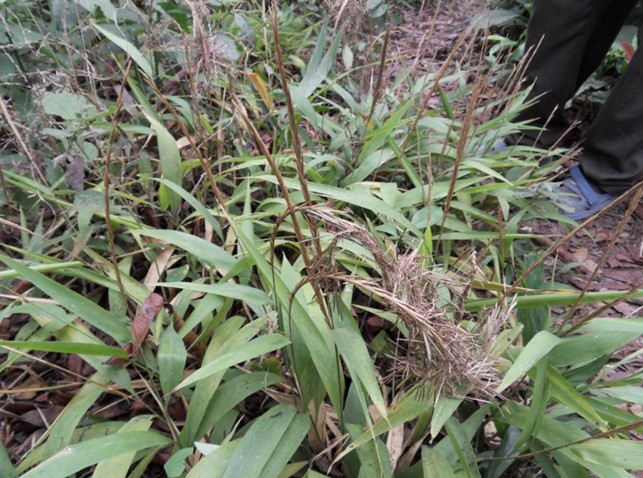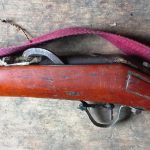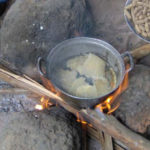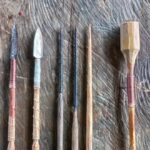
Common names Nkansu ngo (= claw of the leopard), Leopard claw grass, Nzefo za ngo, Kansingo (Kongo)
Description
A perennial grass with culms 30 – 150 cm high, growing from scaly rhizomes. Leaf blades are spear-shaped, 10 – 40 cm long and 1 – 3.6 cm wide. The flower spike is up to 20 cm long with dark green to brown, overlapping spikelets, 20 – 30 mm long, bearing strongly barbed awns up to 25 mm long.
Ecology
Present in the ground layer of the forest. Found from Senegal to Bioko Island and across tropical Africa and also in India and Sri Lanka. Sometimes found in shaded cropland. A noxious weed, particularly when fruiting, as the awns catch in clothing and hairy legs, and on animal fur where they are difficult and painful to remove.
Uses
Commonly used to catch mice and rats. The flower stalks are rolled up together and stuffed down their holes.
Remarks
The seeds form balls that cling strongly to clothing. Birds caught in these balls are unable to extricate themselves and often die.
References
Gillet & Paque 1910, Renier 1948, Daeleman & Pauwels 1983, Burkill 1994
___________________________________________________________________________________________________________
Text and photo at this article © Paul Letham. The professional background and contact information of the author of this article can be found here.
.





